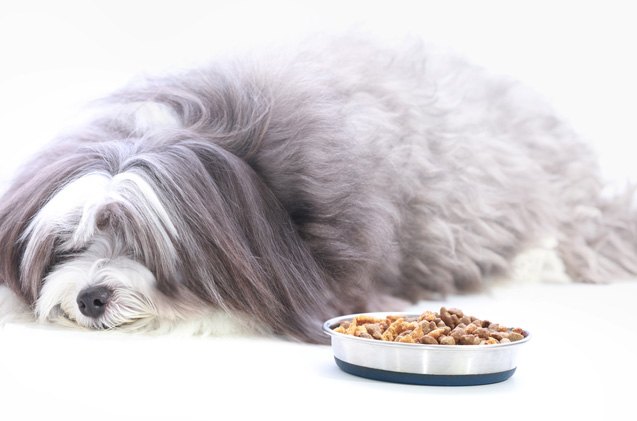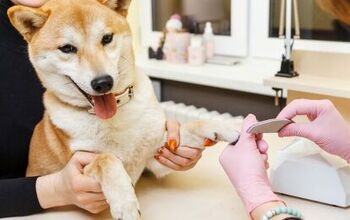Simple Mealtime Solutions for Picky Eaters

Why Isn’t he Eating?
There could be a number of reasons why your pup is turning his nose up at his meals. Before assuming that he’s stubborn, consider medical causes and discuss his lack of appetite with your vet. It would be cruel to start making lifestyle changes if your dog’s problem is in fact medical.
Occasionally a dog doesn’t like his food anymore, possibly due to a change in the formula or simply boredom with the same old flavor every day. I’ve embraced rotation feeding, as many nutrition experts now recommend varying dog’s diets among several high-quality brands and proteins. This is because every brand and food type (dry, wet, and so on) inevitably has a different nutritional makeup. One food, even if considered “complete and balanced,” may not meet all your dog’s nutritional needs and could put your pooch at a disadvantage over the years. Could you imagine eating the same meal every single day for your whole life? Even pizza would lose its appeal, and the missing vitamins in your diet would catch up with you eventually.
Make the Most out of Mealtime
Make sure your dog is on a regular feeding schedule. (The number of meals fed per day will depend on your dog’s age and health, so discuss it with your vet first.) Dogs that are free fed, meaning they always have access to the bowl of food, are often the hardest to train. Imagine the human equivalent. A teenager who has free access to his parents’ bank accounts may have a closet full of designer clothing that has never been worn, or crash daddy’s car and simply replace it the next day. This individual doesn’t value money because he always has access to more, no effort required. Now picture your dog, who snubs your training treats because, “Hmph, I can just eat later. I don’t need to sit for your treat.” And your dog is right!
On the other hand, a dog that is fed at regular times each day learns to see food differently. He sees the value of food. He thinks, “Oh boy, mealtime! I’ve been waiting all day for this!” If he doesn’t finish his meal within ten minutes, you can save it for his next meal, about which he will probably be much more enthusiastic. That’s a dog who is infinitely more motivated to work for (and with) you in order to get what he wants.
When you feed, use a food-dispensing toy. They come in many forms: hollow rubber toys, hollow balls, puzzle toys, even bluetooth-activated toys. For some dogs, including puppies and excitable dogs, eating is boring compared to all the other fun things going on. A food-dispensing toy can encourage him to eat by turning mealtime into game-time. Give it to your dog in a quiet place with few distractions, which will allow him to focus on his meal.
Manners First
In life, the best rewards are those that are earned. This holds true for your dog, too. You are the gatekeeper of all the things your dog wants: food, toys, attention, and access to going outside. Use this to your advantage, so only polite dogs get their meals. Follow these steps.
- Ask your dog to “sit” while you are preparing his food. If he stands up at any point, immediately walk out of the kitchen for a few seconds. When you come back in, wait for him to sit again before resuming his meal prep. Repeat as needed.
- While putting the food down on the floor, he must remain sitting. Slowly put the bowl (or food-dispensing toy) down, several feet away from the dog. If he stands up, snatch the bowl back up and wait for him to sit, then start again.
- Give a release word such as “okay” to tell him when he can get up and start eating.
Habits don’t change overnight, but if you consistently treat mealtime as the best time of day, your dog is likely to catch on and join in the fun.

Kate Naito, CPDT-KA, is a dog trainer at Doggie Academy in Brooklyn, NY, and author of the training book, "BKLN Manners." She draws upon her experience as an educator and dog trainer to apply positive training techniques to a challenging urban environment. Kate is a rescue advocate drawn to special-needs dogs and currently has two Chihuahua mixes, Batman and Beans.
More by Kate Naito























